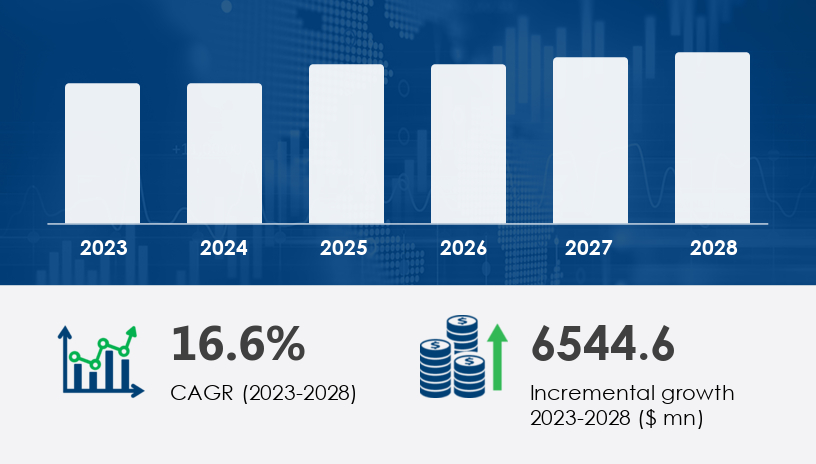The electric unmanned aerial vehicle (E-UAV) market is projected to grow by USD 6.54 billion at a staggering CAGR of 16.6% between 2023 and 2028, setting the stage for disruptive innovation across defense, agriculture, disaster relief, and more. In this 2025 outlook, we explore the underlying trends, opportunities, and challenges driving one of the most rapidly evolving aerospace sectors. This comprehensive guide delivers strategic insights for investors, manufacturers, and policymakers navigating the future of electric aviation.
For more details about the industry, get the PDF sample report for free

Electric Unmanned Aerial Vehicles (E-UAVs) are aircraft powered by electric propulsion systems and operated without an onboard human pilot. These aircraft are revolutionizing sectors such as defense, environmental monitoring, infrastructure inspection, and emergency response by offering quiet, cost-efficient, and emissions-free flight.
The Electric Unmanned Aerial Vehicle (E-UAV) Market is witnessing accelerated growth due to rising demand for eco-friendly aerial systems across multiple sectors. Various UAV types, such as fixed-wing UAV, rotary-wing UAV, multi-rotor drone, hybrid UAV, and even lighter-than-air and heavier-than-air platforms, are being deployed for diverse applications. Innovations in bio-mimicry UAV design are also emerging to mimic nature's flight mechanisms for enhanced maneuverability and stealth. E-UAVs are predominantly powered by lithium-ion batteries, fuel cells, and solar power, supported by efficient electric motors and advanced propulsion systems. These aircraft often operate with ground control systems and carry sophisticated sensor payloads, including camera systems, thermal imaging, and LiDAR technology for tasks such as aerial photography, mapping drone missions, and surveillance drone operations. Other prominent applications include disaster management, agricultural drone usage, and delivery drone services, with real-time responsiveness enabled through robust communication networks and GPS navigation.
Modern E-UAVs are benefitting from next-generation electric motors delivering maximum torque, reduced emissions, and extended flight times. Silent operation is now a critical competitive advantage, particularly for military and urban applications.
Sensor fusion combines inputs from multiple sources (thermal, infrared, radar, visual) to improve accuracy and performance. E-UAVs integrated with such systems are ideal for high-stakes missions—think disaster recovery, border patrol, and tactical surveillance.
See What’s Inside: Access a Free Sample of Our In-Depth Market Research Report.
Battery-powered E-UAVs are leading due to their reliability and widespread availability. Lithium-ion batteries, despite their 30% charge retention drop after 1,000 cycles, remain the most viable option for commercial and civil applications.
Quick Fact: In 2018, the battery segment was valued at USD 3.63 billion, showing consistent year-over-year growth since.
Silent operation
Lower operational cost
Easy maintenance
Limited range for long missions
Weight and charge density trade-offs
Decreased performance over time
With 40% of global market growth coming from North America, particularly the U.S., E-UAV adoption is surging. Driving factors include:
Long and complex national borders
Tactical defense applications
Favorable government contracts and R&D support
Request Your Free Report Sample – Uncover Key Trends & Opportunities Today
As battery limitations persist, fuel cell technology and hybrid systems offer a viable alternative, especially for long-endurance flights. These systems combine the benefits of electrical and fuel-based propulsion—delivering longer ranges with lower emissions.
Inspired by birds and insects, bio-mimicry UAVs are designed for swarming, environmental adaptability, and enhanced aerodynamics. Smart skin technologies integrate sensors directly into the aircraft surface for real-time feedback.
Designing for Size, Weight, and Power (SWaP) efficiency remains a bottleneck. High-performance payloads often exceed current energy capabilities, limiting operational scope for longer missions.
Ensuring real-time data transmission and safe navigation in civil airspace, especially for military UAVs, is a complex challenge. Interoperability with global Air Traffic Control (ATC) systems must be achieved without increasing SWaP overhead.
Ongoing research in the E-UAV market emphasizes performance enhancements through advances in autonomous flight, vision-based navigation, and non-vision-based systems that enable seamless operations in complex environments. Central to these improvements are metrics like energy density, specific energy, battery efficiency, and charge retention, which directly affect flight endurance and payload capacity. E-UAV platforms rely on a reliable electric engine and high-performance drone batteries to reduce dependence on fossil fuels and curb greenhouse gas emissions. The integration of sensor fusion technologies enables efficient processing of remote data and real-time data for informed decision-making. These capabilities are vital for roles such as military drone deployment, tactical UAV missions, and intelligence gathering. Coupled with power generation systems that enhance longevity and responsiveness, E-UAVs are transforming how mapping, monitoring, and logistics are conducted across industries, pointing to a future of more sustainable and intelligent aerial systems.
Get more details by ordering the complete report
| Stakeholder | Recommended Strategy |
|---|---|
| Manufacturers | Invest in lightweight materials and hybrid tech |
| Investors | Focus on battery innovation and sensor systems |
| Policymakers | Enable airspace integration and R&D tax incentives |
| Defense Sector | Prioritize stealthy, long-endurance hybrid UAVs |
Swarming Robotics: Multi-UAV coordination for surveillance and combat missions.
Underwater-EUAV Integration: Future E-UAVs may deploy underwater for reconnaissance in coastal areas.
Energy Harvesting: Wind-at-altitude and kite-assisted power systems will emerge for high-endurance operations.
R&D Focus: Prioritize development in energy-dense batteries and AI-based navigation.
Partnerships: Form joint ventures with communication tech firms to resolve ATC compatibility issues.
Geographic Expansion: Target high-potential regions like APAC and Europe with surveillance-heavy needs.
From sensor-rich surveillance to bio-inspired drone fleets, the electric unmanned aerial vehicle (E-UAV) market is more than just a buzzword—it’s a transformation in aviation. With USD 6.54 billion in new opportunities by 2028 and a CAGR of 16.6%, industry players must align with the trends shaping this high-growth frontier.
Safe and Secure SSL Encrypted